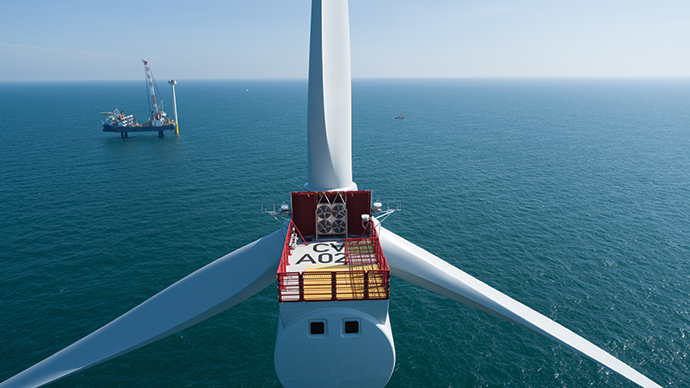A multi-billion-dollar industry is on the brink of taking off along the U.S. East Coast. As the demand for renewable energy skyrockets, a recent study by London-based BVG Associates, an international renewable energy consultant, estimated that investors could spend up to $140 billion by 2035 on wind power facilities along the Atlantic Outer Continental Shelf. The group concluded that electricity generated by offshore wind, virtually non-existent in the U.S. at present, could reach a massive 40 gigawatts in a mere 15 years.
Fueling expectations that offshore wind power is an idea whose time has come, the new Biden administration has signaled that it clearly is a friend to the industry. In late March, and with unusual fanfare, the White House announced federal backing for a vastly expanded offshore wind capacity that includes $3 billion for loan guarantees and port upgrades. Crucially, the administration also pledged to streamline a permitting process whose glacial pace had stymied the kind of long-term, 10-figure investments needed to get the industry going.
The encouragement coming from Washington represents “a huge shot in the arm” says Jennifer Palestrant, who as chief deputy at the Virginia Department of Mines, Minerals and Energy is spearheading state and regional efforts to establish what is certain to be an extensive supply chain for an emerging industry that is heavy on manufacturing.
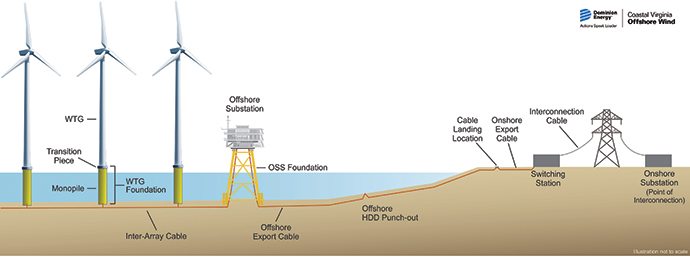
Indeed, signs of an imminent boom are so numerous and vivid that the picture rendered by energy industry officials and analysts is that of a row of sprinters having endured some false starts and now digging in expectantly, finally, for the sound of the starting gun. It is enough to make some officials positively giddy.
“It is incredibly exciting,” says Marcus Cross, director of business development for the Kitty Hawk Offshore Wind Project being launched off the coasts of Virginia and North Carolina by Avangrid Renewables, a projected $2 billion investment expected to generate some 2.5 gigawatts of electricity and up to 1,000 jobs. “How many times in your life do you get a chance to start an entire industry, pretty much from scratch? We are not here to build a project. We’re here to build an industry.”
A Long Way to Go
Things are expected to coalesce quickly. The federal government envisions as many as 2,000 wind turbines spinning in the Atlantic by 2030. Today, there are seven. Five are off Rhode Island and two off Hampton Roads, Virginia.
The monstrous size of a 15MW offshore turbine — more than 800 ft. tall (250 meters) with blades that are longer than a football field — delivers its own hint as to the enormity of what will be required to get the industry up and running.
And therein lies opportunity. A 2020 study by Richmond-based Magnum Economics projected that the offshore wind industry could eventually support in excess of 5,000 jobs in Hampton Roads alone. Home to the world’s largest naval base and some of the nation’s biggest shipbuilding facilities, the coastal region’s ports and associated maritime assets align uniquely, officials believe, for Hampton Roads to serve as an offshore wind energy hub.
“We’re here to build an industry.”
“If this industry can grow on the East Coast, we think it can be supported, in large part, from Hampton Roads,” says Doug Smith, president and CEO of the Hampton Roads Alliance. Last year, the Alliance used a $529,788 grant from the state to launch an initiative to leverage the region’s assets to attract that supply chain. Virginia Gov. Ralph Northam is a staunch supporter of the effort.
“Hampton Roads’ unmatched port infrastructure and high-quality maritime workforce make the region an ideal location for offshore wind energy development,” says Northam. “Virginia should be the prime location for the offshore wind industry, from the supply chain to the full buildout of our offshore wind assets off the coast.”
Why Offshore?
It is easier and initially cheaper to build a wind farm on the plains of West Texas, for example, than it is to sink scores of giant wind generators into the ocean floor. The latter requires the onshore construction of mammoth turbine components — foundations, towers and blades — before hauling them out to sea for final assembly aboard highly specialized vessels, some built from scratch at significant cost. The need for miles and miles of undersea transmission cable drives up the cost even further, as do the requisite offshore substations.
It begs the question: Why not stick to terra firma?
“The wind is better offshore,” says Cross. “It’s cleaner, stronger and more consistent. It’s going to cost more to start but the return is better.”
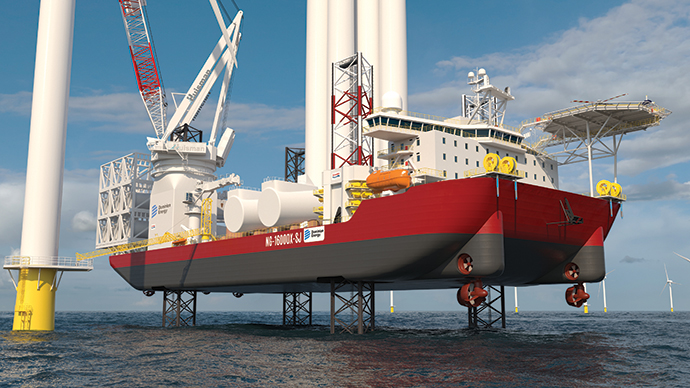
Already a proven power source in northern Europe and China, sea-based wind turbines can be built much larger than onshore installations, so much so that turbines mounted offshore can generate roughly twice as much power as their land-based equivalents. Offshore winds along the power-hungry East Coast are strongest in the afternoon and evening, when electricity demand is at its highest.
With the cost of offshore wind generation having dropped by close to two-thirds between 2012 and 2018, offshore enjoys still another important advantage relative to wind power generated on land: Moderate marine temperatures pose virtually no threat of icing, as did the Texas freeze of February. Up and down the East Coast, about 20 proposed wind farms are awaiting necessary permits and approvals. There is work to be done, and lots of it.
Dominion Energy Is Going Big
A $7.8 billion project off the coast of Virginia Beach could make Hampton Roads a lock to land a substantial chunk of the offshore wind power supply chain business. Richmond-based Dominion Energy is moving forward with plans to build what will be the biggest offshore wind farm in the United States off the coast of Virginia Beach. The utility’s two-turbine pilot project made history in January when it began delivering power to the onshore grid, a first from federal waters. The slightly larger Block Island Wind Farm, the nation’s only other operating offshore wind facility, rests in state waters off Rhode Island.
At projected completion in 2026, Dominion’s 2.6-gigawatt Coastal Virginia Offshore Wind project is to power up to 660,000 homes with clean, sustainable electricity, representing a major step toward the utility’s mandate to become carbon-free by 2045, as required by the newly-passed Virginia Clean Economy Act. The Dominion project is to create about 900 jobs and $143 million in economic impact during construction, and 1,100 jobs and nearly $210 million in economic impact each year afterward.
“Virginia should be the prime location for the offshore wind industry.”
“We are well underway with permitting activities, and we have a number of procurements with contractors right now,” says John Larson, Dominion’s director of public policy. “We are very actively engaged in the procurement phase.”
At the Port of Virginia, just 30 nautical miles from the project, the 270-acre (110-hectare) Portsmouth Marine Terminal is undergoing tens of millions of dollars of upgrades to service offshore wind manufacturing, handling and transportation. The Portsmouth terminal rests near the mouth of the Elizabeth River, the region’s industrial heartland and shipbuilding nexus. It could be the perfect fit for the burgeoning industry’s hub.
“With all these projects starting to come online, there will be a need for ports and harbors to play a role not only for staging and loadout, but ultimately for the development of U.S. domestic-based supply chain,” says Chris Gullickson, the Port of Virginia’s director of economic development.
“Maybe different than other types of commodities and cargo,” Gullickson tells Site Selection, “this really lends itself well to what this community is made up of, and that is not only maritime handling activity but shipbuilding, ship repair, and other industrial functions that happen along the waterways here in the harbor.”
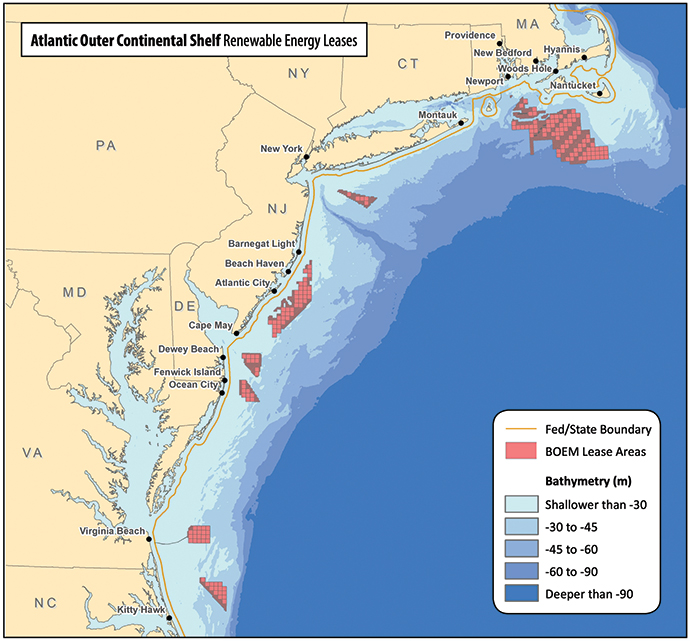
Jennifer Palestrant agrees that offshore wind plays to the region’s strong suits.
“People ask me what we do amazingly well in Hampton Roads, and I tell them large-scale maritime steel. It doesn’t matter whether it’s an aircraft carrier or a wind turbine or a submarine, the skillsets are very similar. Anytime we can take the skillsets that we already do amazingly well, and we can bring the diversity to them. I think it’s really powerful.”
Given its experience in offshore wind development dating back some 30 years, Europe possesses the industry know-how, and the widespread belief is that major players in European renewables soon will be signing contracts and setting up shop to build their big wind contraptions over here. Given the looming opportunities, it only makes sense.
“We all want to see a domestic supply chain because that should reduce costs,” says Dominion’s Larson. “The European manufacturers looking to locate in the U.S. have been waiting for projects to move ahead, like we’re seeing now. It’s going to result in significant job creation. When you look at it, it’s truly astounding the number of jobs and services that are required to construct offshore wind and all the other infrastructure that goes with it.
“My favorite example,” Larson muses, “is elevators. We’re going to have 188 crew elevators anywhere between 27 and 42 miles offshore. And guess what? Dominion doesn’t maintain and repair elevators. So, we’ll need companies that have qualified technicians with the right training to be able to go out and work on those elevators. It’s just endless, the jobs.”
Landing the Big One
Last year, Dominion announced an agreement with Siemens Gamesa, a giant in the offshore wind power industry, to supply its project off Hampton Roads with the Spain-based manufacturer’s state-of-the-art SG 14-222 turbines. The conditional arrangement could give the Hampton Roads region an important leg up in landing what observers see as the holy grail of the wind power supply chain. Namely, a plant to manufacture those component-rich turbines and massive blades.
“If you can get the blade manufacturer, the tower manufacturer or the foundation manufacturer, supporting those guys is where all these jobs are going to come from,” says the Hampton Roads Alliance’s Smith. “This is a long-term investment. You’re going to be in that facility and you’re going to be serving the East Coast for many years.”
For its part, Siemens Gamesa has expressed a clear interest in a Virginia location as it looks toward establishing an East Coast foothold.
“We all want to see a domestic supply chain because that should reduce costs.”
“We are actively engaged in discussions with stakeholders in several states on how we can localize our supply chain to the benefit of local communities,” said Siemens Gamesa’s Steve Dayney in a statement to Site Selection. Dayney, Siemens Gamesa’s head of offshore for North America, added that the company “is in in advanced stages of discussion with Dominion to establish a blade facility in Virginia, but a final decision has not yet been made.”
Avangrid’s Cross says that a Siemens blade plant would be a “fantastic achievement” for the region. “And,” he adds, “we don’t want just one blade supplier, we want three. Then, we’ll take the best choice.”
Along with Dominion Energy, Avangrid Renewables is among a growing number of industry players that are joining forces with the Hampton Roads Alliance to establish the Virginia Offshore Wind Landing, a cooperative space to encourage supply chain buildout. Other founding members include AZCO (metal fabrication), Burns & McDonnell (engineering), Crowley (maritime supply chain), Seaway7 (offshore construction), Atlantic Wind Transfers (crew vessels) and Nexans (cables).
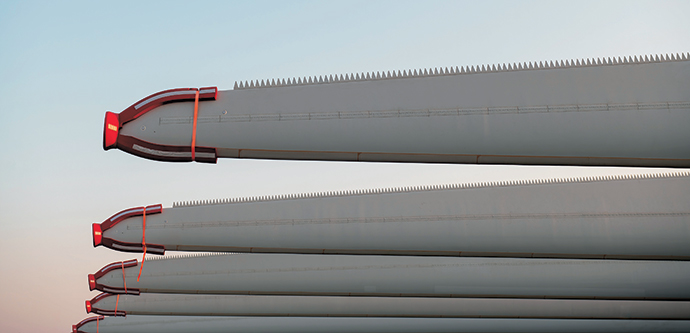
Nicole Ryf, the Alliance’s chief strategy officer, says that while the initial idea was to provide co-working space for European contractors on exploratory visits, the mission has broadened to promote entrepreneurship within the industry. Old Dominion University’s OpenSeas Technology Innovation Hub, which helps to commercialize cutting-edge maritime industry research, has signed on to provide programming.
It’s All About Teamwork
So focused is the effort to drive the new industry that an informal group that includes the Hampton Roads Alliance, Palestrant’s Department of Mines, Minerals and Energy, the Virginia Maritime Association, Port of Virginia and the Virginia Economic Development Partnership has dubbed itself the “Offshore Wind Avengers.”
“Everyone really enjoys the collegiality, trust, collaboration and support we experience working together on this initiative,” says Ryf.
The across-the-board outbreak of public-private cooperation across jurisdictional and other traditional boundaries underscores a clear consensus that this is an opportunity that cannot be missed. To that end, Virginia has engaged its wind-blown neighbors of North Carolina and Maryland in the Southeast and Mid-Atlantic Regional Transformative Partnership for Offshore Wind Energy Resources (SMART-POWER). The collaboration is meant to foster regulatory certainty, best practices and supply chain development among the three partners.
“We’re working together as a team of the South,” says Palestrant. “So no, I don’t want us competing with our sister states. We want to bring this entire new industry to the region as a whole.”
This Investment Profile was prepared under the auspices of the Hampton Roads Alliance. For more information contact Matt Smith at (757) 355-1136 or msmith@757alliance.com.
